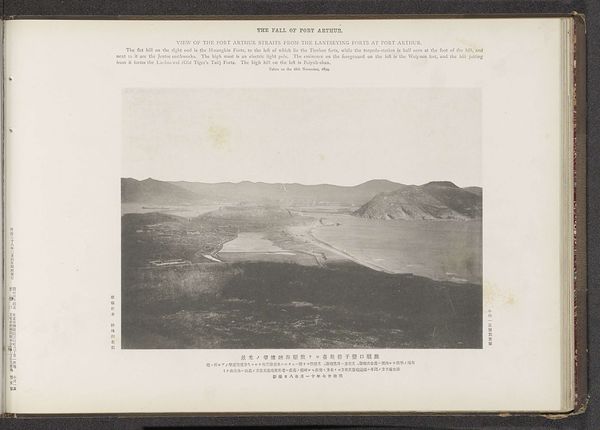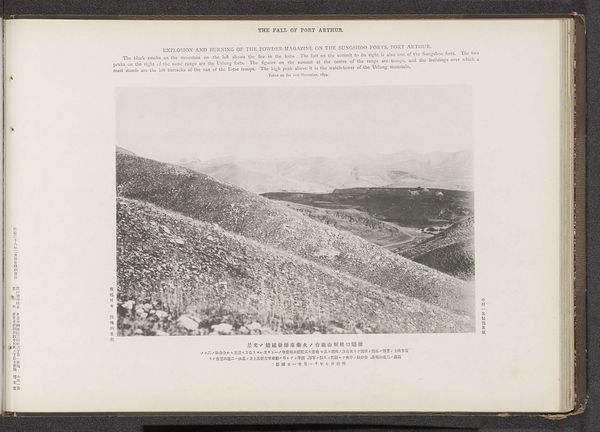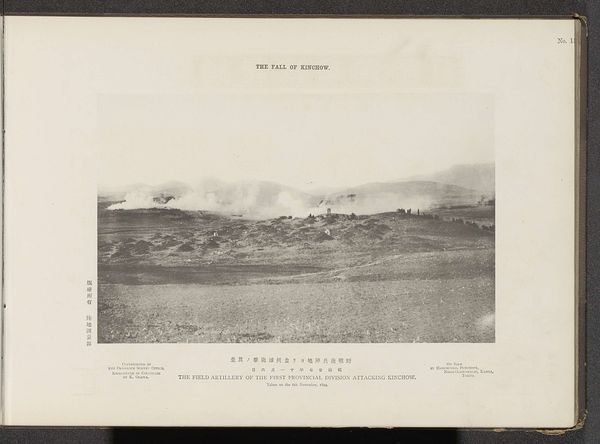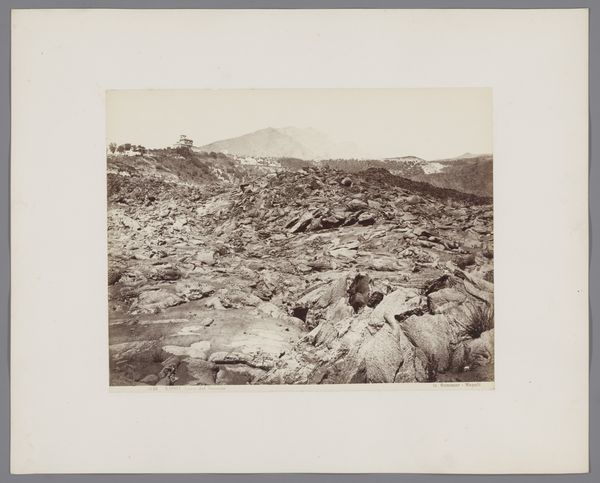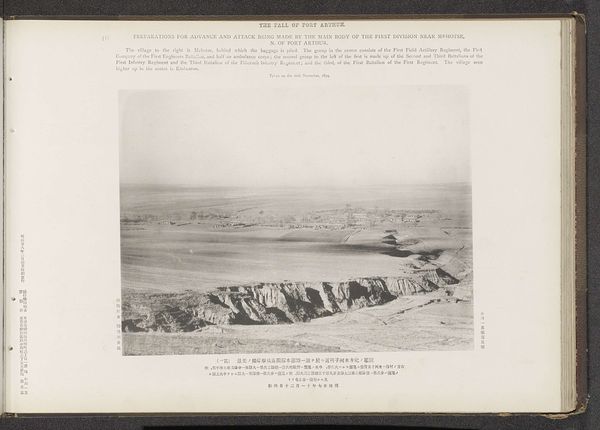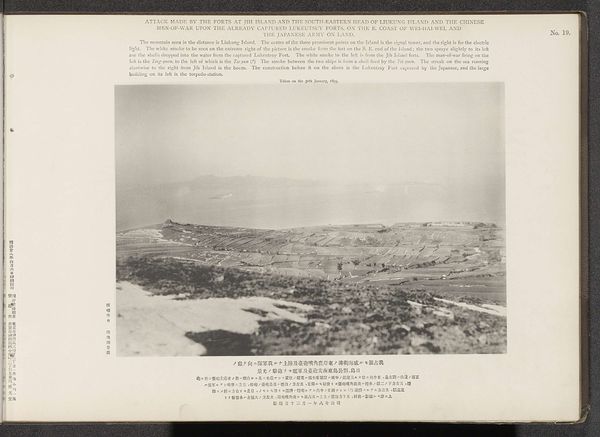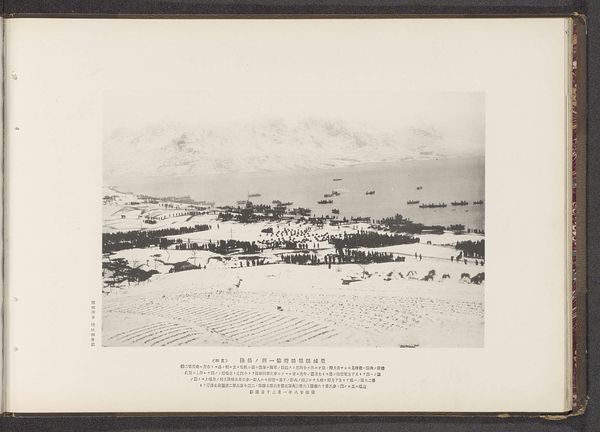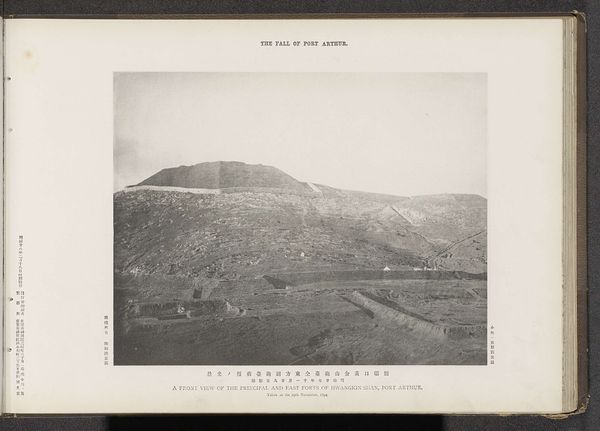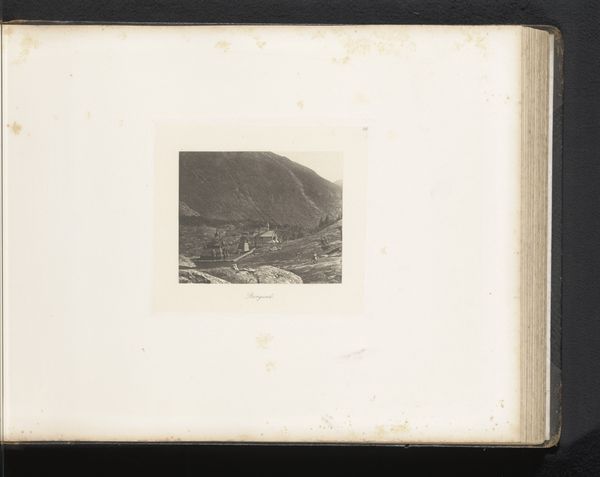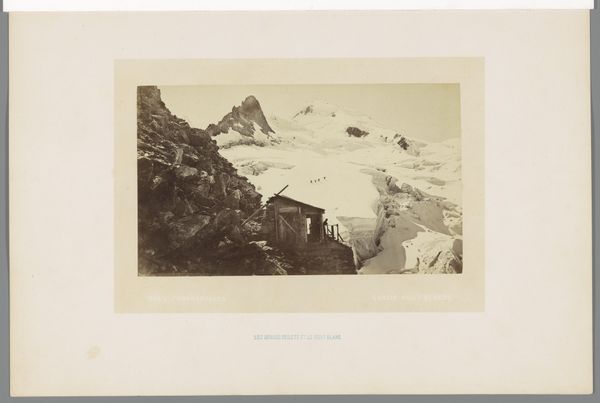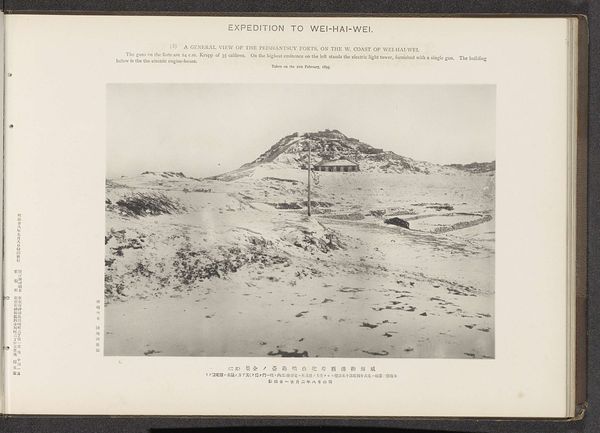
photography, gelatin-silver-print
#
landscape
#
photography
#
gelatin-silver-print
Dimensions: height 193 mm, width 292 mm
Copyright: Rijks Museum: Open Domain
Editor: This gelatin silver print, possibly from 1895, titled "Japanese Troops in Lungshwy Bay" by the Ordnance Survey Office, has a desolate feel. The landscape is stark and wintry, and it is dominated by what looks like Japanese soldiers. How do you interpret this photograph, in particular the seeming orientalism here? Curator: That’s a great starting point. The presence of the Japanese troops can certainly be interpreted through the lens of Orientalism, especially if we consider the power dynamics at play during that period. Late 19th-century photography often reinforced colonial narratives. What strikes me is the way the landscape is depicted, almost as if it is there to serve as a backdrop for a display of military prowess. Have you considered how this representation might relate to the then-contemporary political agendas? Editor: I see what you mean. It’s not just a neutral recording of a place; it's a carefully constructed image. So, the composition – the way the troops are positioned against the vast landscape – that would contribute to the message? Curator: Exactly. Think about the implied narrative. A landscape, ripe for conquering, being tamed by military occupation. It’s a projection of power and control onto the environment and its people. Also, we might want to dig deeper into understanding who commissioned and consumed images like these, as those factors heavily shape how we understand its function within the imperial project. How might a feminist lens add a dimension to your understanding here? Editor: The power structures on view make me want to know whose stories are not included. Now I wonder about the native perspectives in that area. I am going to have to reflect on the photographer and commissioner of this piece. Thank you. Curator: It's crucial to examine the narratives we take for granted and look at the history as not a fixed event, but one subject to diverse and complex viewpoints.
Comments
No comments
Be the first to comment and join the conversation on the ultimate creative platform.

